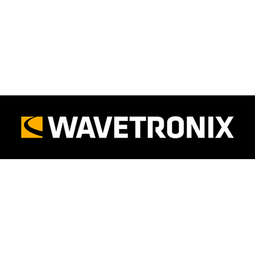
Technology Category
- Infrastructure as a Service (IaaS)
Applicable Industries
- Transportation
Applicable Functions
- Logistics & Transportation
Use Cases
- Traffic Monitoring
The Customer
The City of Incheon and the Republic of Korea’s Ministry of Land, Transport and Maritime Affairs; and David Lee of HK Associates
About The Customer
The City of Incheon and the Republic of Korea’s Ministry of Land, Transport and Maritime Affairs; and David Lee of HK Associates
The Challenge
Incheon City’s transportation agency needed a traffic management system that could keep traffic moving by identifying areas of congestion and offering alternative routes to drivers. The goal of the system was to reduce the societal costs associated with traffic congestion as well as the pollution caused by vehicle emissions. “Incheon City officials are committed to reducing pollution,” says David Lee, who represents Wavetronix in South Korea. “The catchphrase here is ‘low carbon monoxide and green traffic systems.’”
Incheon City has a population of more than 2.6 million and is home to South Korea’s largest airport and largest western seaport. These factors result in a large and unpredictable stream of traffic on the city’s roadways, and the heavy congestion has led to inefficient roads and high levels of air pollution. Because traffic flow through the city can alternate in unpredictable patterns, traffic engineers need real-time traffic volumes, lane occupancy and per vehicle speeds in order to determine when and where alternative routes should be made available. This detection is required 24 hours a day, seven days a week and must run efficiently with little downtime in order to keep these unpredictable traffic flows moving smoothly. Because the city is often covered in fog, video detection is rendered unusable; inductive loops, while accurate in fog, require extensive and expensive installation and maintenance. This efficiency became especially important as Incheon City prepared to host the 2014 Asian Games, which were expected to cause even more traffic, especially at the airport and on the newly-completed, 13 mile (21 km) Incheon Grand Bridge, which offers another route between Yeonjong Island, where the airport is located, and the mainland.
The Solution
As the city’s transportation agency began to implement the innovative traffic management system, they selected SmartSensor HD as the detection technology. They chose radar because of the extensive fog around the city; they chose SmartSensor HD because it was found to perform more accurately than other radar sensors. HD’s high performance also made it the traffic sensor of choice for the Incheon Grand Bridge. “Officials reviewed other installations in South Korea and found that competitive devices were less efficient and less accurate,” David Lee says.

Case Study missing?
Start adding your own!
Register with your work email and create a new case study profile for your business.
Related Case Studies.

Case Study
Airport SCADA Systems Improve Service Levels
Modern airports are one of the busiest environments on Earth and rely on process automation equipment to ensure service operators achieve their KPIs. Increasingly airport SCADA systems are being used to control all aspects of the operation and associated facilities. This is because unplanned system downtime can cost dearly, both in terms of reduced revenues and the associated loss of customer satisfaction due to inevitable travel inconvenience and disruption.

Case Study
IoT-based Fleet Intelligence Innovation
Speed to market is precious for DRVR, a rapidly growing start-up company. With a business model dependent on reliable mobile data, managers were spending their lives trying to negotiate data roaming deals with mobile network operators in different countries. And, even then, service quality was a constant concern.

Case Study
Digitize Railway with Deutsche Bahn
To reduce maintenance costs and delay-causing failures for Deutsche Bahn. They need manual measurements by a position measurement system based on custom-made MEMS sensor clusters, which allow autonomous and continuous monitoring with wireless data transmission and long battery. They were looking for data pre-processing solution in the sensor and machine learning algorithms in the cloud so as to detect critical wear.

Case Study
Cold Chain Transportation and Refrigerated Fleet Management System
1) Create a digital connected transportation solution to retrofit cold chain trailers with real-time tracking and controls. 2) Prevent multi-million dollar losses due to theft or spoilage. 3) Deliver a digital chain-of-custody solution for door to door load monitoring and security. 4) Provide a trusted multi-fleet solution in a single application with granular data and access controls.

Case Study
Vehicle Fleet Analytics
Organizations frequently implement a maintenance strategy for their fleets of vehicles using a combination of time and usage based maintenance schedules. While effective as a whole, time and usage based schedules do not take into account driving patterns, environmental factors, and sensors currently deployed within the vehicle measuring crank voltage, ignition voltage, and acceleration, all of which have a significant influence on the overall health of the vehicle.In a typical fleet, a large percentage of road calls are related to electrical failure, with battery failure being a common cause. Battery failures result in unmet service agreement levels and costly re-adjustment of scheduled to provide replacement vehicles. To reduce the impact of unplanned maintenance, the transportation logistics company was interested in a trial of C3 Vehicle Fleet Analytics.

Case Study
3M Gains Real-Time Insight with Cloud Solution
The company has a long track record of innovative technology solutions. For example, 3M helps its customers optimize parking operations by automating fee collection and other processes. To improve support for this rapidly expanding segment, 3M needed to automate its own data collection and reporting. The company had recently purchased the assets of parking, tolling, and automatic license plate reader businesses, and required better insight into these acquisitions. Chad Reed, Global Business Manager for 3M Parking Systems, says, “With thousands of installations across the world, we couldn’t keep track of our software and hardware deployments, which made it difficult to understand our market penetration.” 3M wanted a tracking application that sales staff could use to get real-time information about the type and location of 3M products in parking lots and garages. So that it could be used on-site with potential customers, the solution would have to provide access to data anytime, anywhere, and from an array of mobile devices. Jason Fox, Mobile Application Architect at 3M, upped the ante by volunteering to deliver the new app in one weekend. For Fox and his team, these requirements meant turning to the cloud instead of an on-premises datacenter. “My first thought was to go directly to the cloud because we needed to provide access not only to our salespeople, but to resellers who didn’t have access to our internal network,” says Fox. “The cloud just seemed like a logical choice.”



